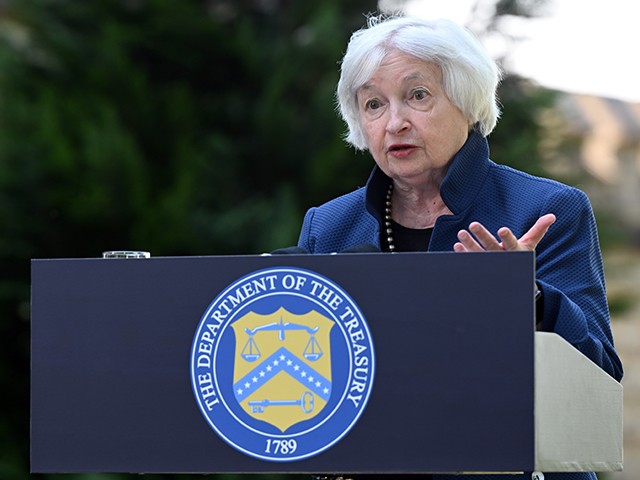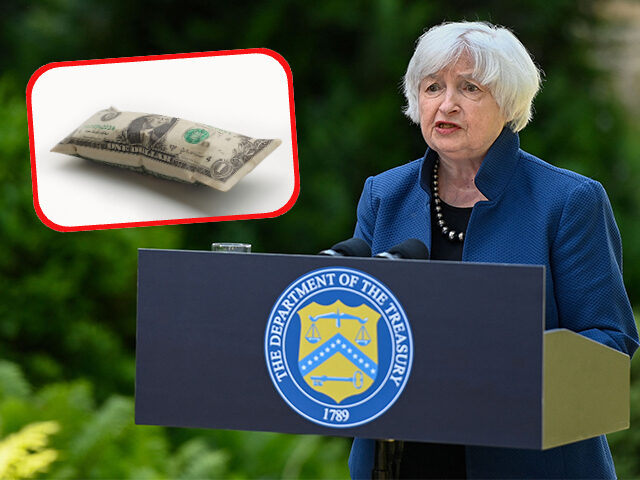The September produce price index rose at twice the rate expected by economists in September, once again indicating that forecasters continue to underestimate the persistence of inflation.
The producer price index (PPI) for final demand rose at a month-to-month rate of four-tenths of a percentage point, lapping the forecast for a two-tenths rise. The year-over-year figure was up 8.5 percent, one-tenth above the forecast. Core-core producer prices—which exclude food, energy, and trade services (a measure of margins rather than prices)—rose 0.4 percent, also beating the forecast of 0.3 percent.
This sets the stage for another upside surprise in the Consumer Price Index (CPI) when it is released on Thursday morning. The forecast is for an increase in the monthly headline rate from 0.1 percent to 0.2 percent. Core prices are seen as rising 0.4 percent, which would be a slowdown from the 0.6 percent gain for August prices. That expected decline is largely due to expectations that the goods side of consumer price inflation will slow down enough to offset expected gains in services inflation and persistence in shelter inflation.
In the last 18 months, CPI inflation has surprised to the upside ten times and to the downside only twice, according to Ethan Harris at Bank of America. That’s a shockingly bad track record and an indicator that professional economic forecasters have stubbornly refused to adjust their views to comport with reality.
Harris sees two explanations for the persistence of error about the persistence of inflation. First, economists have never had to deal with the kind of serial supply shocks we’ve seen since the start of the pandemic, so they had no proper measure for how those could affect prices longer term. Second, decades of very low and stable inflation, despite big changes in the labor market, had convinced many economists that the Phillips Curve—the idea that there is a trade-off between unemployment and inflation—was “essentially dead.” The curve was flat, which meant very low unemployment would not generate much price pressure, in this view. Anchored inflation expectations due to central bank credibility on price stability would keep the curve flat. Inflation itself was not quite dead since it could still be caused by sustained supply shocks, but there was no significant risk of wage-price spirals.

U.S. Treasury Secretary Janet Yellen answers questions at a press conference at the G7 meeting in Konigswinter, Germany, on May 18, 2022. (Federico Gambarini/dpa via Getty Images)
This view helps explain why the Fed initially put a great deal of faith in the idea that inflation would come down once supply chains were prepared. It also explains why so many economists, politicians, and pundits continue to insist that inflation is still being driven almost exclusively by insufficient supply rather than excessive demand. As Treasury Secretary Janet Yellen said in an interview with CNBC on Tuesday, inflation was caused by “a series of shocks that virtually no one could have predicted” like Russia’s invasion of Ukraine and supply issues. Somewhere in the dark corners of their brains is an implicit economic model telling them that inflation is driven by supply shocks because only supply shocks can cause inflation.
Harris focuses on the need for forecasters to dust off the Phillips Curve and accept the idea that inflation is likely to persist absent a significant softening in the labor market. Jason Furman and Larry Summers have been pushing this view as well. And it appears to have been accepted by many Federal Reserve officials, including Chairman Jerome Powell.
Unfortunately, the idea that inflation expectations are a major driver of realized inflation may still be misleading many into expecting lower inflation. Despite a devastating critique from Fed economist Jeremy B. Rudd in a 27-page paper published this year, the idea that inflation expectations matter a lot for future inflation remains a central tenet of mainstream economic theory. When Fed officials talk about bringing down inflation by cooling the labor market, they often defend their implicit plan to raise unemployment by saying it is necessary to keep inflation expectations well anchored. Many of the predictions that inflation is likely to moderate in the near-term rest on signs that inflation expectations—as measure, say, by the University of Michigan’s consumer sentiment survey or the New York Fed’s tracker—have recently fallen.
Rudd argued that there was little theoretical or empirical support for the idea that expectations control inflation. Instead, inflation appears to be somewhat self-perpetuating. Instead of inflation being caused by expectations about the future, businesses set prices and workers negotiate for wages based on recent experience. If price increases have been low and stable, they’re likely to stay that way. When businesses and workers have gone through a period of rapidly rising prices, they are likely to keep raising prices and demanding higher wages. Inflation isn’t set by our thoughts about the future but our thoughts about the past, Rudd argues.

(iStock/Getty Images)
If Rudd is right, inflation will continue to be more persistent than forecasters think. The signals about declining expectations are misleading economists into complacency. This implies that monetary policy will have to become more restrictive than is currently expected by markets and forecasters.
A third factor encouraging the persistence of underestimating inflation is simply the old idea that there is safety in numbers. Getting out of sync with other economists increases the personal and professional cost of making a mistake. If a forecaster is wrong when everyone else is wrong, there’s very little cost. As Yellen put it in that CNBC interview, she “was in good company in failing to see that inflation would increase and remain as persistent as it has.” Staying in that good company is only prudent for folks who make a living making predictions.

COMMENTS
Please let us know if you're having issues with commenting.